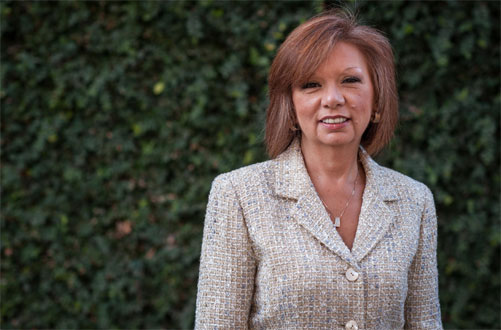
Trademark searches are a critical step in the trademark registration process. If a proposed mark is confusingly similar to one or more existing marks, it may be unregistrable and may present an infringement risk. A trademark search heads off these potential issues and is a due diligence that every entrepreneur and business should undertake before adopting and advertising brands and business names. This article will explore various aspects of trademark searches, including key concepts, methodologies, and the importance of thorough investigation.
A trademark search is an investigation to determine whether a particular mark conflicts with similar trademarks are already in use or registered by another entity. This process helps to avoid likelihood of confusion issues with existing marks and, if necessary, allows the entrepreneur or business to revise their branding strategy and identify a mark that can be registered with the United States Patent and Trademark Office (USPTO). A search should include an effective search of both trademark registrations, trademark applications, and unregistered trademark use.
Trademark Registrations
A trademark registration grants exclusive rights to use a trademark or service mark in connection with the goods or services listed in the trademark application. It provides legal protection against unauthorized use by others and enhances the brand's value.
Trademark Applications
Pending trademark applications must also be considered in a trademark clearance analysis. A filed trademark application has priority of rights over a later filed trademark application.
Common Law Rights and Pre-Existing Marks
Common law rights are acquired through the actual use of a mark in commerce, even if the mark is not registered. It is important to consider common law rights when conducting a trademark search, as pre-existing marks with such rights can still pose a conflict.
Likelihood of confusion is a legal standard used to assess whether consumers might mistakenly believe that goods or services offered under two different marks come from the same source. This concept is crucial in trademark searches and registration, as well as trademark infringement.
A reasonable consumer is an ordinary person who exercises average care in purchasing goods or services. The perspective of a reasonable consumer is used to evaluate the likelihood of confusion between trademarks.
Commercial impression refers to the overall perception created by a mark in the minds of consumers. It includes factors like appearance, sound, and meaning, which collectively determine whether trademarks are confusingly similar. These are most important factors to considered in determining whether a pre-existing mark is too similar and would create consumer confusion:
Appearance: The visual similarity between trademarks. The appearance of the marks is crucial because visual similarity can lead consumers to mistakenly believe that the goods or services come from the same source.
Sound: The phonetic similarity between two marks. Sound is also important as phonetically similar marks can cause confusion, especially when spoken in advertisements or over the phone.
Meaning: The conceptual similarity between trademarks. The meaning of the marks, or their connotations, plays a significant role as well. If two marks convey similar ideas or concepts, consumers might associate them with the same brand.
Goods and Services: The relatedness of the goods or services associated with the marks. The nature of the goods and services associated with the marks is critical. Even if the marks differ slightly, confusion is more likely if they are used for similar products or services.
Identical marks are exact matches with regard to both the mark and the goods and services. In such situations there is no question as to whether there is a likelihood of confusion. Similar marks require analysis of the factors, including those listed above. A similar mark may differ in some aspects but still create a similar commercial impression. For example, the mark "INSPIRATIONS" for a restaurant may be confusing similar to the use of "INSPIRED" for a bar. The marks are similar in appearance, sound, and meaning, as the words are different grammatical variations of the same root word. The services are also very similar as restaurant and bar services are regularly offered in the same establishment. Judgment must be made as to whether the proposed mark and the proposed mark will be considered similar to the extent of rejection by the USPTO. If a conflicting mark is found, there are further considerations to evaluate. If the pre-existing mark is in a different geographic location the risk of infringement is lessened as there is little to no chance that your use of the mark is damaging the other trademark owner. Also, if the other conflicting mark is used on other classes of goods or services they may be sufficiently distinct so as to avoid a likelihood of confusion. For example, Delta airlines and Delta faucets can co-exist because their respective goods and services are different enough that the separate uses of the mark are not confusing to the consuming public.

The Trademark Electronic Search System (TESS)
The USPTO offers the Trademark Electronic Search System (TESS), an online tool that allows users to search USPTO records for existing trademarks. The USPTO's trademark database contains records of all registered trademarks and pending trademark applications. This database is a valuable resource for conducting preliminary searches to identify potential conflicts with a registered mark or trademark application.
Search for Unregistered Trademark Use
Unfortunately, there is no single answer on how to conduct a trademark search for unregistered trademarks and service marks. There are many search strategies, which typically are focused on online resources, such as search engines and social media platforms to identify common law trademark usage. Investigating industry-specific forums, websites, and blogs can also provide useful information, as well as checking domain name registrations. An effective search for unregistered trademarks requires a combination of methods to provide thoroughness in determining whether a conflict exists with an unregistered trademark.
Foreign Trademark Office Search Tools:
Many foreign jurisdictions have their own trademark search databases that allow the public to search their trademark records. For example, the European Union Intellectual Property Office (EUIPO) trademark search tool is an essential resource for trademark attorneys and applicants that are interested in trademark filings in the EU and some other jurisdictions. This comprehensive database provides access to over 62 million trademark records in international jurisdictions. The tool offers insights into trademark trends and competitor activities, facilitating strategic decision-making in trademark registration and protection. Its multilingual interface ensures accessibility for users across different EU member states.
Preliminary USPTO Search: Start with a preliminary search using TESS to identify any identical marks or similar trademarks that could pose a conflict.
In-Depth Search: Conduct a more thorough investigation, including common law sources, to uncover any unregistered marks that might have common law rights.
Analyzing Search Results: Review the search results to determine if any existing marks could be considered confusingly similar to the proposed mark.
A trademark attorney has the expertise to conduct a comprehensive trademark search and interpret the results. They can provide guidance on the likelihood of confusion and the potential for conflicts with pre-existing marks.
The trademark application process involves several steps, including submitting the application, examination by an examining attorney, and publication for opposition. A thorough trademark search before filing can streamline this process by reducing the likelihood of objections. The search helps identify any related, existing marks that may be confusingly similar to the applied-for mark, thus avoiding potential legal conflicts and rejection by the USPTO. An applicant who neglects to conduct a search risks having their application denied by an examining attorney on the grounds that the mark is confusingly similar to an existing mark.
The examining attorney, the USPTO official who reviews trademark applications, will evaluate the applied-for mark to determine if it meets all legal requirements for registration. One of their key tasks is to ensure that the mark is not likely to cause confusion with an existing mark. This assessment involves considering various factors, including the similarity in appearance, sound, and meaning of the marks, as well as the relatedness of the goods or services they represent.
The trademark search provides the applicant with the knowledge of any potential issues before filing, allowing the trademark applicant (e.g., an entrepreneurial individual, a company, etc.) to make informed decisions about whether to proceed with the application or to consider alternative marks. While conducting a trademark search does not guarantee that the mark will be registered, it significantly reduces the risk of rejection and helps the company navigate the application process more effectively.
A thorough trademark search helps to avoid conflicts with existing marks, ensuring a smoother registration process and protecting the brand's legal rights.
Utilizing the resources available, such as the USPTO's trademark database and the expertise of a trademark attorney, can provide valuable guidance in conducting a comprehensive trademark search.
Trademark searches are a vital part of protecting a brand's identity and ensuring its legal standing. By understanding the key concepts and utilizing available resources, businesses can confidently navigate the trademark registration process and safeguard their intellectual property.
This article highlights the importance of trademark searches and provides a detailed overview of the steps and considerations involved. Conducting a thorough search and consulting with a trademark attorney can help ensure that a proposed mark is unique, legally protectable, and free from potential conflicts.

"The team at Sierra IP Law was extremely professional, helpful and knowledgeable with regards to assisting me with my Trademark services! They were always quick to respond to emails and phone calls and I would highly recommend them for any of your trademark needs!"
David O.
Sierra IP Law, PC - Patents, Trademarks & Copyrights
FRESNO
7030 N. Fruit Ave.
Suite 110
Fresno, CA 93711
(559) 436-3800 | phone
BAKERSFIELD
1925 G. Street
Bakersfield, CA 93301
(661) 200-7724 | phone
SAN LUIS OBISPO
956 Walnut Street, 2nd Floor
San Luis Obispo, CA 93401
(805) 275-0943 | phone
SACRAMENTO
180 Promenade Circle, Suite 300
Sacramento, CA 95834
(916) 209-8525 | phone
MODESTO
1300 10th St., Suite F.
Modesto, CA 95345
(209) 286-0069 | phone
SANTA BARBARA
414 Olive Street
Santa Barbara, CA 93101
(805) 275-0943 | phone
SAN MATEO
1650 Borel Place, Suite 216
San Mateo, CA, CA 94402
(650) 398-1644. | phone
STOCKTON
110 N. San Joaquin St., 2nd Floor
Stockton, CA 95202
(209) 286-0069 | phone
PORTLAND
425 NW 10th Ave., Suite 200
Portland, OR 97209
(503) 343-9983 | phone
TACOMA
1201 Pacific Avenue, Suite 600
Tacoma, WA 98402
(253) 345-1545 | phone
KENNEWICK
1030 N Center Pkwy Suite N196
Kennewick, WA 99336
(509) 255-3442 | phone
2023 Sierra IP Law, PC - Patents, Trademarks & Copyrights - All Rights Reserved - Sitemap Privacy Lawyer Fresno, CA - Trademark Lawyer Modesto CA - Patent Lawyer Bakersfield, CA - Trademark Lawyer Bakersfield, CA - Patent Lawyer San Luis Obispo, CA - Trademark Lawyer San Luis Obispo, CA - Trademark Infringement Lawyer Tacoma WA - Internet Lawyer Bakersfield, CA - Trademark Lawyer Sacramento, CA - Patent Lawyer Sacramento, CA - Trademark Infringement Lawyer Sacrament CA - Patent Lawyer Tacoma WA - Intellectual Property Lawyer Tacoma WA - Trademark lawyer Tacoma WA - Portland Patent Attorney - Santa Barbara Patent Attorney - Santa Barbara Trademark Attorney